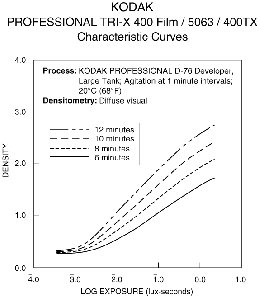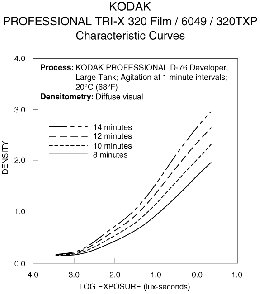Michael Scarpitti
2003-07-31 19:01:53 UTC
When asking questions on a newsgroup such as this one, the answers
received should be treated with some scepticism.
This is especially true in photography, because for some reason
photography seems to be plagued by a culture of half-truths and
misinformation. Any number of things will be said that are based on an
imperfect or incorrect understanding of the scientific principles
governing light, silver halide, and optical glass.
I remember working with a photo student who said he didn't 'need' to
use any filter on his variable contrast paper. For him, using the
filter meant his negative was in some way 'deficient' or 'weak'.
Ilford (and now Kodak) have set up the filter scheme on their VC
papers to make the exposure for grades #1-3 identical, with #4 simply
double. So, if this student were to use the #2 filter, he could change
to #3 or #1 with no alteration of exposure, which he is unable to do
if he goes from 'no filter' to one of the others. He has to start from
scratch to figure out the exposure.
So, for those who are users of 35mm film, I offer the following
recommendations:
1. If you can find one, get a Leica Focotar-2 50mm f/4.5 enlarging
lens. Expect to pay a good price for this, the best enlarging lens
ever made. Several hundred dollars. (Here's one that went as part of
complete Reprovit set-up):
http://cgi.ebay.com/ws/eBayISAPI.dll?ViewItem&item=2942016651&category=30030
2. Avoid T-Max films for non-studio use. Their contrast/tonal range
makes them extremely difficult to use out-of-doors. The contrast range
in a studio is limited and controlled, whereas that of an out-of-doors
setting is many times higher. This often leads to unprintable
negatives, especially with TMY. I'd suggest Tr-X or HP5 for a good
fast film, and FP4 for a medium speed film.
3. Tr-X in D-76 1:1 (@EI 320) and FP4 in Acutol (@EI 160) are hard to
beat.
4. Use of a condenser enlarger coupled with modest developing times
(20-30% less than Kodak's listed times) and semi-compensating
development (see 3, above) will provide astonishing sharpness and fine
grain in 35mm work. Use grade 3 as your standard grade.
5. The Zone Sytem is based on erroneous assumptions in its origin, and
at best works only partially as intended, and then only with sheet
film. 35mm users are advised to stick with standardized, consistent,
semi-compensating development and condenser enlarging for the optimum
compromise between convenience and technical quality. Changing
dilution for coping with extreme contrast is far superior to
shortening devlopment time below normal.
6. Don't be cheap. Don't expect a cheap filter or lens to be as good
as a camera mfr's filter or lens, and don't expect a Pentax or Minolta
lens to equal a Leica optic. It won't happen.
7. Pushing really doesn't work. If you need more speed, use a
speed-increasing developer such as Microphen or Acufine at the
'normal' time(!), or use a super-speed film. You're better off using a
faster film and slowing it down slightly (Tri-X at EI 250 in D-76 1:1
is wonderful!) than using a slower film and pushing it. That is,
unless you happen to like clear shadow areas.
8. Graded paper is better than variable contrast paper. You will have
smoother gradations of tone in the middle greys. I know: I tested
them.
9. Don't write back and say I'm wrong. Trust me. I've been doing this
for 40 years.
10. Read #9 again.
11. Film that's dated for 1957 or 1965 is no good anymore.
received should be treated with some scepticism.
This is especially true in photography, because for some reason
photography seems to be plagued by a culture of half-truths and
misinformation. Any number of things will be said that are based on an
imperfect or incorrect understanding of the scientific principles
governing light, silver halide, and optical glass.
I remember working with a photo student who said he didn't 'need' to
use any filter on his variable contrast paper. For him, using the
filter meant his negative was in some way 'deficient' or 'weak'.
Ilford (and now Kodak) have set up the filter scheme on their VC
papers to make the exposure for grades #1-3 identical, with #4 simply
double. So, if this student were to use the #2 filter, he could change
to #3 or #1 with no alteration of exposure, which he is unable to do
if he goes from 'no filter' to one of the others. He has to start from
scratch to figure out the exposure.
So, for those who are users of 35mm film, I offer the following
recommendations:
1. If you can find one, get a Leica Focotar-2 50mm f/4.5 enlarging
lens. Expect to pay a good price for this, the best enlarging lens
ever made. Several hundred dollars. (Here's one that went as part of
complete Reprovit set-up):
http://cgi.ebay.com/ws/eBayISAPI.dll?ViewItem&item=2942016651&category=30030
2. Avoid T-Max films for non-studio use. Their contrast/tonal range
makes them extremely difficult to use out-of-doors. The contrast range
in a studio is limited and controlled, whereas that of an out-of-doors
setting is many times higher. This often leads to unprintable
negatives, especially with TMY. I'd suggest Tr-X or HP5 for a good
fast film, and FP4 for a medium speed film.
3. Tr-X in D-76 1:1 (@EI 320) and FP4 in Acutol (@EI 160) are hard to
beat.
4. Use of a condenser enlarger coupled with modest developing times
(20-30% less than Kodak's listed times) and semi-compensating
development (see 3, above) will provide astonishing sharpness and fine
grain in 35mm work. Use grade 3 as your standard grade.
5. The Zone Sytem is based on erroneous assumptions in its origin, and
at best works only partially as intended, and then only with sheet
film. 35mm users are advised to stick with standardized, consistent,
semi-compensating development and condenser enlarging for the optimum
compromise between convenience and technical quality. Changing
dilution for coping with extreme contrast is far superior to
shortening devlopment time below normal.
6. Don't be cheap. Don't expect a cheap filter or lens to be as good
as a camera mfr's filter or lens, and don't expect a Pentax or Minolta
lens to equal a Leica optic. It won't happen.
7. Pushing really doesn't work. If you need more speed, use a
speed-increasing developer such as Microphen or Acufine at the
'normal' time(!), or use a super-speed film. You're better off using a
faster film and slowing it down slightly (Tri-X at EI 250 in D-76 1:1
is wonderful!) than using a slower film and pushing it. That is,
unless you happen to like clear shadow areas.
8. Graded paper is better than variable contrast paper. You will have
smoother gradations of tone in the middle greys. I know: I tested
them.
9. Don't write back and say I'm wrong. Trust me. I've been doing this
for 40 years.
10. Read #9 again.
11. Film that's dated for 1957 or 1965 is no good anymore.

